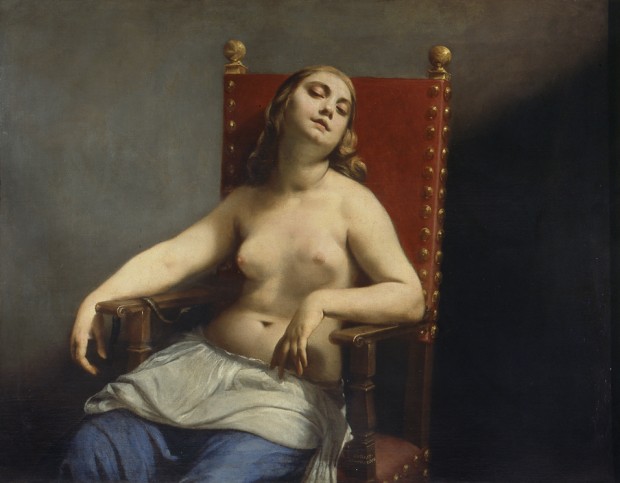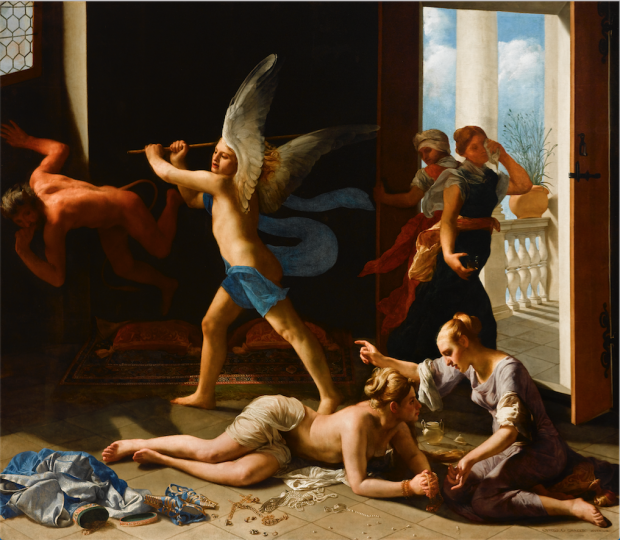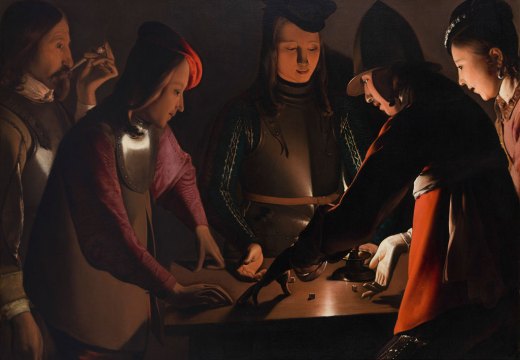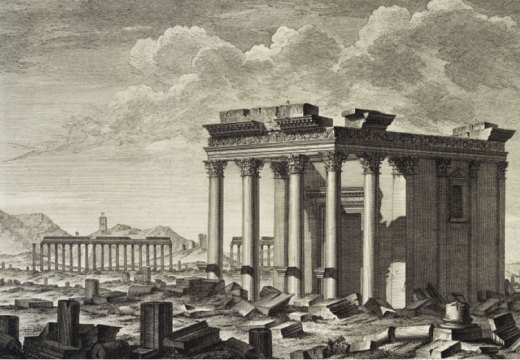In March 2008 I travelled to Forlì to visit an exhibition on Guido Cagnacci (1601–63), the extraordinary and eccentric painter who was born in Romagna and worked in that region for most of his life. Placed between the Apennine Mountains and the Adriatic Sea, south of the Veneto and north of the Marches, Romagna remains little known for its artistic treasures outside of Italy. The 2008 exhibition confirmed my love for Cagnacci, a painter whose name is recognised by only a small group of art historians and museum lovers. Knowledge of Italian art is still linked to major centres of artistic production and when we think of Italy most minds turn to Rome, Florence, Venice, and then to Bologna and Naples. Regrettably, international familiarity with the arts in regions such as Liguria, Sicily, or the Marches is at best erratic.
The Frick Collection has a long-term agreement with the Norton Simon Museum in Pasadena for reciprocal loans. When I arrived at the Frick in 2014 I had to choose a single work from the Norton Simon for future display in New York (25 October–22 January 2017). I had no doubt that this should be Cagnacci’s masterpiece: his Repentant Magdalene (c. 1660), painted for Emperor Leopold I in Vienna (Cagnacci died in the imperial city). The large canvas is one of a very small number of pictures by the artist in America and one of his most important paintings. I have loved this painting since I first saw it in Pasadena many years ago, and was excited by the prospect of presenting a little-known artist like Cagnacci to a wider audience in New York.
To accompany the display of this single painting I decided to write a book about Cagnacci’s life and art. Invariably all publications on the painter are in Italian and I wanted to provide an approachable introduction, free of art-historical jargon. To do so I travelled in Cagnacci’s footsteps in Romagna. I visited many of his works in their original locations, and also gained an insight into the world in which he lived and worked. Over the course of last summer I looked at every work by Cagnacci on public view in the region. I started in the small town of Santarcangelo di Romagna, where he was born, and visited the larger cities of Rimini and Forlì, where he painted some of his most important commissions. I also travelled to small local towns, such as Montegridolfo, Saludecio, and Urbania.
Most of Cagnacci’s paintings in these locations are altarpieces and often they are still preserved in the churches for which they were painted. Many of these buildings have been substantially transformed in the 18th and 19th centuries, so it is almost impossible to see any of the painter’s works in their intact original context. One of his earliest altarpieces, the Virgin and Child with Saints Sebastian, Roch, and Hyacinth (c. 1620–25) is in the tiny church of San Rocco in Montegridolfo. In this town – and this became a constant theme of the trip – I found the church closed. Most of these churches remain locked except on Sundays, for security reasons and for lack of staff. However, for each church where the doors were closed, I found someone who had keys and could grant access. I am hugely grateful to the old lady who lives across the street from San Rocco and who, after I rang her doorbell, came down with keys to open the minute church. In Saludecio, while I waited for the parish priest to drive from a nearby town, I made use of a local barbershop. In Urbania one of the nuns from the nearby enclosed convent opened the church for me. Even many of the museums were closed; the stroll through the old headquarters of the Pinacoteca of Forlì, in Palazzo del Merenda, with a kind guard who let me in remains memorable. Two of Cagnacci’s most beautiful paintings, his Glory of Saint Valeriano and Glory of Saint Mercuriale of 1642–43 (known as the quadroni for their impressive dimensions) are preserved there and loomed over me in the empty salone.

The Death of Cleopatra , (c. 1660), Guido Cagnacci. Pinacoteca di Brera, Milan
During my trip I was based in Rimini, on the Adriatic coast, one of the cities in which Cagnacci grew up and worked, and from where he fled after attempting to elope with a widowed noblewoman in 1628. While there, two later figures became inextricably associated in my mind with the painter. The first was the composer Niccolò Paganini, whose violin concertos, which were recorded by Massimo Quarta in 2003 using the virtuoso’s own violin (known for its power as ‘Il Cannone’), became the soundtrack of my trip; some of the command and idiosyncracy of his music seems to capture the character of Cagnacci’s paintings. One of Rimini’s local heroes is the film director Federico Fellini. In the evenings, after dinners by the sea I would return to my hotel, the same one that inspired scenes in Fellini’s movies, and watch his films, Amarcord and La Dolce Vita. Many of their erotically charged female characters made me think and look at Cagnacci in a different way. Did Fellini know Cagnacci’s paintings? Was Anita Ekberg’s character in La Dolce Vita a successor of Cagnacci’s Cleopatra? I like to imagine Fellini as one of the visitors to the 1959 exhibition in Bologna where Cagnacci’s Death of Cleopatra (c. 1660), now at the Pinacoteca di Brera, was first exhibited. The painting certainly inspired other intellectuals of the day, in particular the Italian writer Alberto Arbasino.
I hope that the arrival of Cagnacci’s Repentant Magdalene at the Frick Collection, and its subsequent showing at the National Gallery in London (15 February–21 May 2017), will allow people to be inspired by an astonishing painting and by the artistic vision of this genius from Romagna.
Cagnacci’s Repentant Magdalene is on display at the Frick Collection, New York, until 22 January 2017.
From the October issue of Apollo: preview and subscribe here.
Unlimited access from just $16 every 3 months
Subscribe to get unlimited and exclusive access to the top art stories, interviews and exhibition reviews.














![Masterpiece [Re]discovery 2022. Photo: Ben Fisher Photography, courtesy of Masterpiece London](http://www.apollo-magazine.com/wp-content/uploads/2022/07/MPL2022_4263.jpg)
Why are fathers so absent from art history?